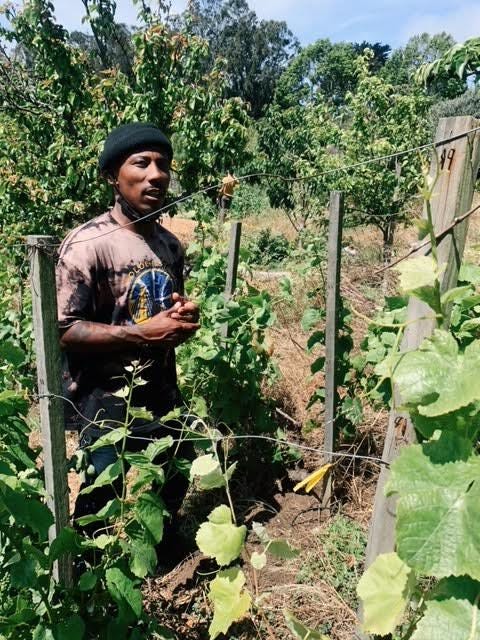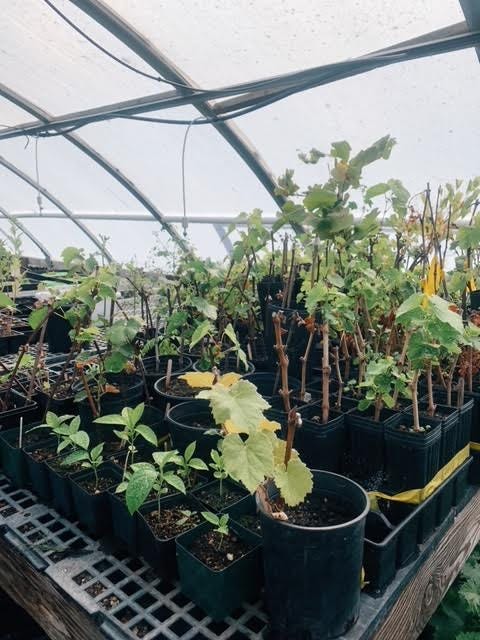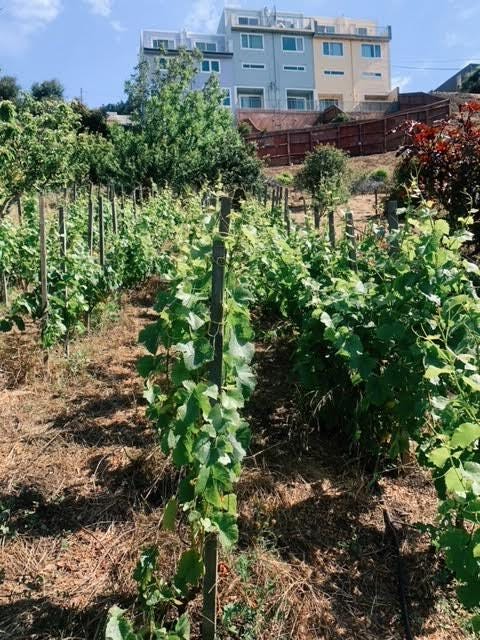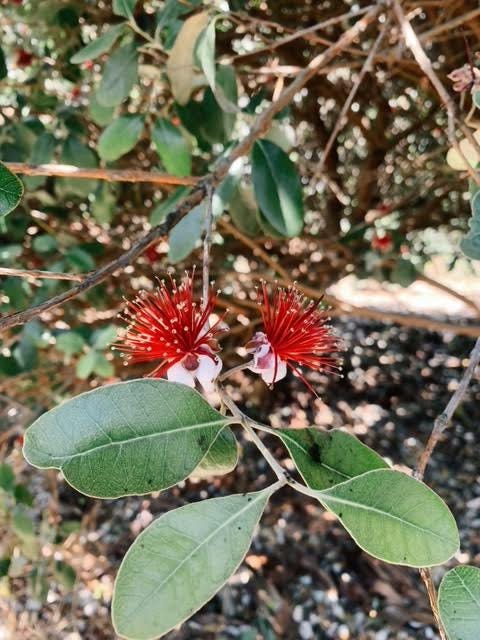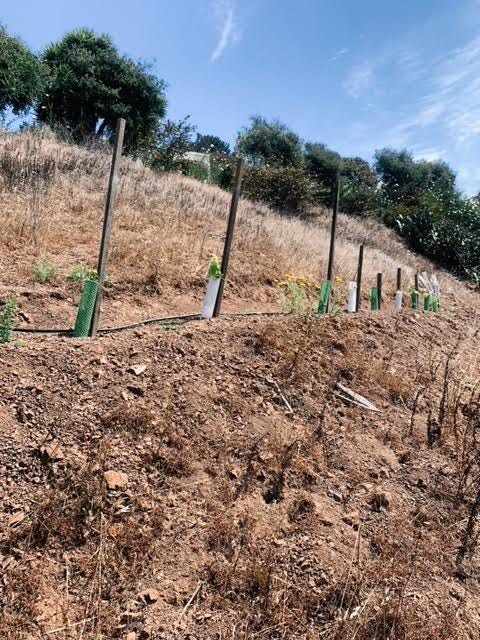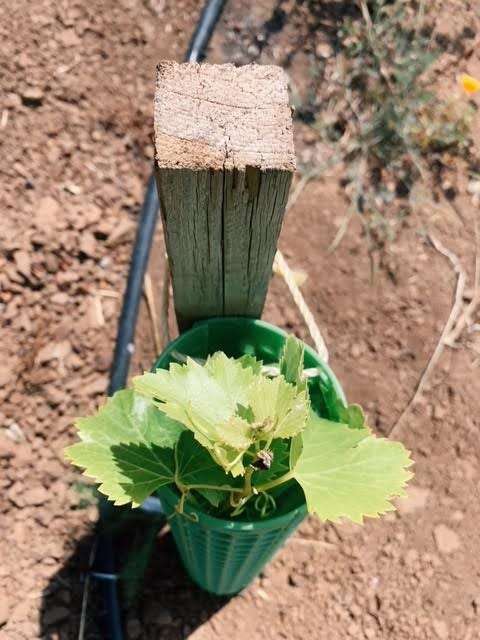The Fizz #28: Christopher Renfro, S.F. urban viticulturist & non-profit co-founder is actively making change in the wine industry
I visited viticulturist and non-profit co-founder Christopher Renfro of The Two Eighty Project. We talked about his mission for community access, viticulture practices, education, & more.
Earlier this month, I flew out to California to visit with winemakers I’m excited about, and take some time to rest. For the 28th issue of The Fizz, I visited with San Francisco viticulturist Christopher Renfro. Christopher is a grape grower, educator, and community organizer focused on creating opportunities for connection, education, and business growth for BIPOC and queer and trans people in the San Francisco area. He co-founded and organizes The Two-Eighty Project, with his partner Jannea Tschirch. I was so glad to be able to catch him on my trip.
For this visit, I met Chris at Alemany Farm, where he grows vines and helps farm. Alemany Farm is the largest urban farm in San Francisco sitting at 3.5 acres, and it’s right off of the 280 Highway. It’s public land, and it’s absolutely beautiful. The place is a permaculture-inspired food forest with no garden beds or demarcations. It is full of guava, mulberry, and apple trees, vegetables and herbs, and native plants. There are places to sit and meet, mini-trails to stroll, and information areas. It feels inspired and comfortable. Alemany Farm is also the home of The Two-Eighty Project vineyard Chris farms, and where he accesses a greenhouse for his vine cuttings.
For this interview, we walked around the vines and spoke about his mission, his vision for the internship, and his work in the vineyard.
Margot: Can you tell me a bit about this place? Where are we?
Christopher: This is the Alemany Farm. It was a farm way back. These here [gestures to a set of buildings on our right behind a fence right next to the farm grounds] are the Alemany apartments, which have been projects for a long time. This version of the farm has been here for 15 years. Friends of Alemany Farm co-ordinate all the volunteers who make it run. Before that it was called SLUG, which taught inner city kids about food ways and paid them, but it got shut down. Before any of this even existed, though, there were some older Black people in this community that were gardening in this place and they were kicked off when SLUG got kicked off.
This is a public park, but there’s a giant fence around it. If you go to any other park in the city, there are no fences like these, there are spikes on these fences. I don’t see that many Black kids coming in here and playing—there’s definitely a disconnect. It’s a really interesting place to be.
Margot: Can anyone come here and harvest this food?
Absolutely. It’s farmed by the farmers, but free for the entire community—folks can come and harvest anytime they want. They just ask that you don’t take more than you need. That’s an issue that I see—people get used to having their own plots, and it’s not really community-minded. Every major part of San Francisco should have space be dedicated to food in this way. It’s not like everyone has an individual plot—there’s no concept of “this is mine”. Individual plots are so hard to get, too. I’ve been on a waiting list for the past 8 years for my own plot.
M: This feels really collaborative.
We walk into the greenhouse, where many different plants are growing, and where Chris keeps some of the young vines that he’ll eventually plant. “These are all clones that I’ve been getting from friends and finding places. There are passion flowers here too. I have some hybrids here too.”
M: How long has this vineyard been around?
C: This was planted in 2013 by Elly Hartshorn of Neighborhood Vineyards. She built it and put it in—at one point it was 115-120 vines. She wasn’t able to care for them anymore, and I found out and rushed over to ask if I could take care of them. I’ve been doing that ever since. When I started taking care of the property, I moved the vines. Everyone told me not to do it, but they’re producing fruit this year.
M: Is the vineyard a part of the public land?
C: It is part of the public land. Elly put in a proposal to the farm talking about a vineyard. Her idea was to create small plots all over San Francisco for a wine company. She found out the legal ways to get them in, and most of the vines were donated by Sunridge, a plant nursery. I’m glad to be the one to take it over, because I feel like the part that was missing was education and inclusion, and bringing it in for diversity.
It’s right next to the neighborhood. I hope to build a relationship with everyone in the neighborhood, get them into grapes. I’m talking to some young guys going off to college who are wanting to work with me and learn about wine and viticulture, and they also want to get paid, you know? That’s the goal—how do you change it from being bougie and make it into a nice offering for the community? People don’t have to go to Napa—they can learn about it here in their neighborhood, and then they can go to Napa, or can they go with our program.
M: What do you have here?
C: These are all Pinot Noir. I don’t worry too much about training. As long as there’s not a lot of virus, then I’m fine. These have been here for seven years. They were abandoned for a few years, so I had to bring it back, prune everything, feed the soil—all organic inputs. Doing stuff like George Washington Carver—taking muck from the forest, filling in the rows. I’ve used some cover crop stuff, but also just letting nature do its thing. This year I’ll be able to really see how well they do with some of the things I’ve been trying, but at the end of the day I really want to be a great farmer, so what it looks like aesthetically, it doesn’t matter as much. If it’s producing healthy grapes, I’ll probably be alright. I went to school for horticulture, and I’m into teaching myself on the fly.
M: I love that so much, especially because there’s this culture of applauding winemakers who have studied in places like France and New Zealand, but you don’t have to have done that in order to get started. The most important thing is just to be able to get started.
C: Exactly, and I don’t have that time or that privilege, you know? What better way to learn than this tiny plot? I take extensive notes and write down everything I’m learning about.
As we walked through the rows, I noticed a few corn stalks growing in between the vines.
M: Oh wow, you have corn here!
C: Oh yeah! That’s Steve Matthiasson’s corn actually. All the vegetables here grew based upon the water that the vines pulled up.
We walked around the vines and spoke. At one point, there were two enormous hawks flying just a short way from us. We came up to the far part of the vineyard where there was a clear disturbance that looked like a coyote dug out. We ate the white petals off of a guava tree. They were so delicious.
M: How do you work with the community currently?
C: We have a BIPOC apprenticeship with Steve Matthiasson, and U.C. Davis is partnered in it. When I first was thinking about it, I thought it would be me going with a crew of BIPOC and queer and trans people to vineyards, picking three different styles of vineyard—something organic, something massive, and maybe something woman owned or run. Now it’s become so active. Steve has a lot of connections, so now we have almost a completely full calendar from March to September of different vineyards and wineries we visit every Friday. The last Friday of the month we’ll meet here or somewhere else I choose.
Recently, we partnered with a garden called Filoli in the Half Moon Bay area. It’s the only garden trust in America. It’s very special. They’ve allowed us to come to their hybrid vineyard and orchard with hundred year old apple trees. We’ll be able to harvest apples and grapes there.
M: Wow, that sounds amazing. Are folks able to get experience through the internship by actually making wine?
C: That’s the goal. The goal is to get everybody placed into a vineyard or winery they want to work at. We have plans for doing a fundraiser for grapes and for space, to get people into their own spots. It’s all just about timing and money. Any support we can get is so important. It’s crazy, even me—doing this and running this thing, I still don’t have the money or the space to make wine. I made all the wine in my house last year—eight different cuvées.
M: Carboys in your basement sort of vibe?
C: Yeah, in my kitchen actually. We finally got our basement done, so I have 14 carboys, a beer brewing system. I’m going to experiment with that, co-fermenting different stuff, maybe try to make a little bit of sake. I really want to make low ABV drinks—six packs, stuff like that, that you can take to the park. I feel like the access to wineries is still so shut off. It’s not fun to try and figure out how to get in—how am I going to make wine? How do I get far enough to get a label? It’s so complicated, especially when it comes to licensing and money.
Not everybody has 3 grand for a ton of grapes, and a place where to process. [Chris is talking about the cost of grapes here. In California, it’s not uncommon for a winemaker to pay the market price of $3k/ton of grapes—a prohibitively high price. Check out the 2020 California Grape Crush Report for more information on grape prices.] If some of these bigger wineries and houses really believe in diversity and inclusion, they should be setting aside money and time, bringing people in, teaching them, making sure those people are actually doing well in those spaces, making sure they’re safe spaces, that there’s an external person there who can check in on them. I think it’s going to happen soon, but I wish it would have happened sooner.
I’m actually trying to change something. We’re already almost near harvest—that’s what’s so hard about trying to do this and thinking about making wine at the same time. I’m hoping that some people who have the space, the money, and availability, will open their doors.
M: I spoke to Marreya Bailey recently, and she said something interesting—her advice to would-be interns was that if you go to intern somewhere, make sure that winemaker will let you make your own wine.
C: Yeah, if you go work for a winery, what are you there for? You want to make wine. Maybe on the viticulture side, you can’t give a plot of land to someone, but you could give one row. In a winery, that’s even easier—a barrel isn’t that much space. It can be done.
People right now are still performing—they’re like “cool, I met you, I’m glad you have this idea”. Very few people say “here’s the money, here’s the path, let me show you how it can be done, and here are the keys”. They want to say “oh I’m supporting this Black person, let me put it on my Instagram”. It’s a little bit disappointing that the money hasn’t come in. I know that we’re definitely the only people doing this in America.
M: Has the money not come in because folks haven’t heard about what you’re doing?
C: I mean, that could be it, but for example, we reached out to Napa Valley Vintners this year. It was a process—we had to write a whole business plan. They had given their whole amount of funds to UNCF, and I get that, that was one million dollars. The thing is that they knew we had already reached out to them—they could have just connected us with other organizations or investors. They could’ve said “I know we can’t do this, but let me reach out to others and blast this out”. That part to me is weird. I’ve been in magazines and other press, and that question still hasn’t been asked: “what do you need?”. I need funding, I need to pay a salary for myself and my apprentices, further this program and help [the participants] make wine, allow them to travel.
Especially being a person of color, it feels like it’s not my place to ask for assistance, or it’s uncomfortable, but it’s past that point. I want people to like me, but I’ve been doing that shit my whole life. It doesn’t always have to be monetary, but yeah, money is everything right now. How are the next generation of BIPOC and queer and trans folks going to be able to make wine if they don’t have the money? Someone offered me land recently—3.5 acres up in Sacramento, I don’t get to use all of it, but—that’s real. That’s what I’m looking for. I’m very optimistic, but this shit all needs to change. People need to open up and give.
There are other things I want to be doing, too. I’d want to create an African American seed bank. I don’t want my vineyards to be just vines—I want them to be full of food. I’m not into it just for wine. I want to be able to teach this [gestures to the farm and the food growing around us] to everyone.
We walked up a steep trail to the other part of the vineyard, planted on a hillside at the north part of the farm. The further up we went, the more we were flanked by big prickly pear cactus.
M: What kinds of grapes do you have up here?
C: These are Teroldego, but these don’t look like they’re taking. There’s Cabernet Franc and Gamay up here. There’s some Clairette there. That’s Grenache Blanc, and that’s Zweigelt. Then below, it’s all hybrids. I have some more space to add vines here. Eventually I’ll put more on the other side too. It’s all coming in, and it feels amazing. I put four rows here to mimic the four rows of the freeway. If you close your eyes, it sounds like waves.
M: Through the apprenticeship, you all go to these different wineries each week to learn from these different places. When you come back to the farm here, what does that learning look like?
C: Anything we can do that we’ve learned there, we try to implement here. Those places are on such a big scale. Here, it’s more about small projects. Installing irrigation, planting vines, shoot thinning, leafing.
M: If someone were to join this apprenticeship, do they join in the hopes that they get a job afterward?
C: That’s the hope, to place people in vineyards or wineries. Then, they can be the people we can go and visit next year and talk about their roles and how they’ve grown. If we’re only learning from white people about how to make wine, we don’t get an opportunity to learn our own thing.
I’ve been thinking about—how early were we in viticulture in America? I reached out to Thomas Jefferson’s estate, he had 400 acres of vines, and they told me that Italian indentured servants handled the acreage. That doesn’t seem feasible—that’s backbreaking labor and so much time. Knowing what it takes to take care of a vineyard, it makes me totally think that there had to be African American people not only helping plant, prune, down to fermentation possibly. You didn’t just use slaves for agricultural purposes over there, and not use them for the vineyard. There’s supposedly 65,000 documents of slave ledger, like logs, I bet it’s in there. I feel like there’s just a lot of closed off-ness about it, and we have to learn our own growing practices, create our own vineyards and wineries.
M: Do you have wineries who have raised their hand and said “I’ll take one of your graduates”?
C: Not yet, but we’ve had some viticultural consultant people. One person with us, Sabrina, is going to be working with the folks at Les Lunes and Populis, she got a job with them. We’re meeting a lot of people right now—not everyone is safe for our crew to go work with. The people who are safe and want to be a part of it are stepping up to talk to us. It’s the same thing around the money—people know how to reach me. If they want to help, they can.
————-
You can support Christopher Renfro and The Two Eighty Project non-profit by donating your money, resources, and connections (his Venmo is @Christopher-Renfro-2). This is an important organization dedicated to helping open up our industry and create spaces owned by BIPOC, queer, and trans people in farming, viticulture, and enology. You can reach Chris at the Two Eighty Project Instagram.
Liked this interview? Hit subscribe below and help me record more information about exciting winemakers, American history, and help me pay my interviewees who aren’t making wine for their own label. Paid subscriptions are just $5/month or $50/year, and 15% also goes to support St. Francis House, because if you’re making money off of alcohol, you should be donating back to support folks struggling with alcohol abuse. If you share this piece with a friend, it would mean a lot. You can follow me on Instagram here. Thanks for reading!


